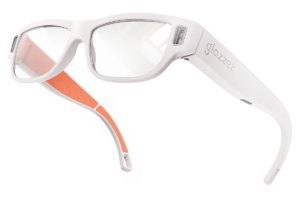The History of Augmented Reality (AR) may seem like a recent phenomenon in the digital world, but its roots delve far deeper than commonly perceived. Journey through time as we unravel the fascinating evolution of AR technology, from its humble beginnings to becoming an integral part of our everyday lives.
Augmented Reality: Beyond Modern Notions
Augmented Reality, often abbreviated as AR, has an ancestry that predates its contemporary fame. Contrary to popular belief, AR dates back almost six decades, surpassing the age of the internet itself.
The present-day landscape is teeming with AR applications, from Snapchat filters to interactive gaming experiences like Pokémon Go, revolutionizing our daily interactions. Despite its extensive journey of around 60 years, AR continues to innovate, pushing the boundaries of what’s achievable in our reality.
Decades of Augmented Reality Evolution: AR in the 60’s
The 1960s marked the inception of AR, credited to Ivan Sutherland’s pioneering work at the University of Salt Lake City. Sutherland’s creation, famously known as the ‘Sword of Damocles,’ served as a head-mounted display presenting images in three dimensions. Despite its groundbreaking nature, this early rendition was cumbersome, requiring suspension from the ceiling and user strapping for operation.
AR in the 90’s
Fast forward to the 1990s, Tom Caudell and David Mizell revolutionized aircraft construction by introducing a head-mounted display named ‘Augmented Reality’ at Boeing. This innovative display projected wiring instructions onto boards, eliminating the need for multiple boards for individual aircraft.
Louis Rosenburg’s ‘Virtual Fixtures’ in 1992 catered to the US Air Force, training pilots in safer flying practices through virtual simulations, while Julie Martin incorporated AR into a theater production named ‘Dancing in Cyberspace.’
Welcome to the New Century: AR in the 00’s
As the 21st century unfolded, AR ventured into gaming with ‘AR Quake’ and expanded to commercial print ads with BMW’s augmented 3D model. The integration of AR into magazines, browser compatibility through ARToolKit, and navigation systems for spacecraft marked significant milestones.
Dive deeper in the history of AR, enjoy this video
AR in the 2010’s
The decade saw AR infiltrate various domains, from Volkswagen’s MARTA app aiding repair instructions to the release of groundbreaking wearable AR technology like Google Glass and Microsoft HoloLens.
The 2020’s
The 2020s witnessed an AR surge in retail, social networks adopting AR filters, and the mainstream popularity of location-based AR games like Pokémon Go. IKEA’s AR app transformed the retail experience, allowing virtual furniture previews before purchase.
Discover engaging adventures in AR Activities for Kids
AR in Sports
Sports industries incorporate AR for enhancing viewer experiences with real-time statistics, player analysis, and interactive game overlays. AR technology enriches sports broadcasting, engaging audiences on a deeper level.
AR in Interior Design and Home Improvement
AR aids interior designers and homeowners by virtually placing furniture and décor, facilitating better design decisions before making physical changes. AR applications optimize home improvement projects.
AR in Museums and Cultural Preservation
Museums utilize AR to offer interactive exhibits, historical reconstructions, and guided tours, enhancing visitor engagement and understanding of cultural artifacts.
AR in Real Estate Advertising and Marketing
Augmented reality in real estate provides prospective buyers with unique opportunities. Through AR applications, clients can view real-time property listings, take virtual tours of homes or apartments, and even visualize potential renovations before making a purchase. This helps buyers better envision the property and make more informed decisions.
Mastering Roblox metaverse champions with InAugment’s Guide
AR in Urban Planning and Construction
Urban architects use AR to visualize construction projects and infrastructure. AR helps bring innovative ideas to life, allowing citizens to participate in the development process and contribute to decisions regarding urban spaces. It’s a crucial tool for increasing community engagement in urban planning.
AR in Fashion and Apparel
The fashion industry employs AR for interactive shopping and virtual try-ons. Shoppers can virtually try on clothes, change colors and styles, simplifying the selection process and helping visualize how the garment will look in reality.
AR in Manufacturing and Logistics
AR finds applications in manufacturing and logistics, enhancing assembly processes, employee training, and inventory management. Through AR applications, workers can receive on-screen assembly instructions and even see virtual pointers, improving efficiency and accuracy.
Conclusion
The dynamic evolution of Augmented Reality spans multiple industries, transforming the way we interact, learn, shop, travel, and entertain ourselves. From healthcare to retail, education to entertainment, AR continues to redefine experiences, promising limitless possibilities for future innovation.
Its seamless integration into various sectors paves the way for an augmented future where digital and physical worlds converge, enhancing our daily lives and driving innovation to newer heights.
Augmented Reality, with its ever-evolving advancements, stands poised as a revolutionary force, shaping our future interactions and experiences in profound and exciting ways.


Average Rating